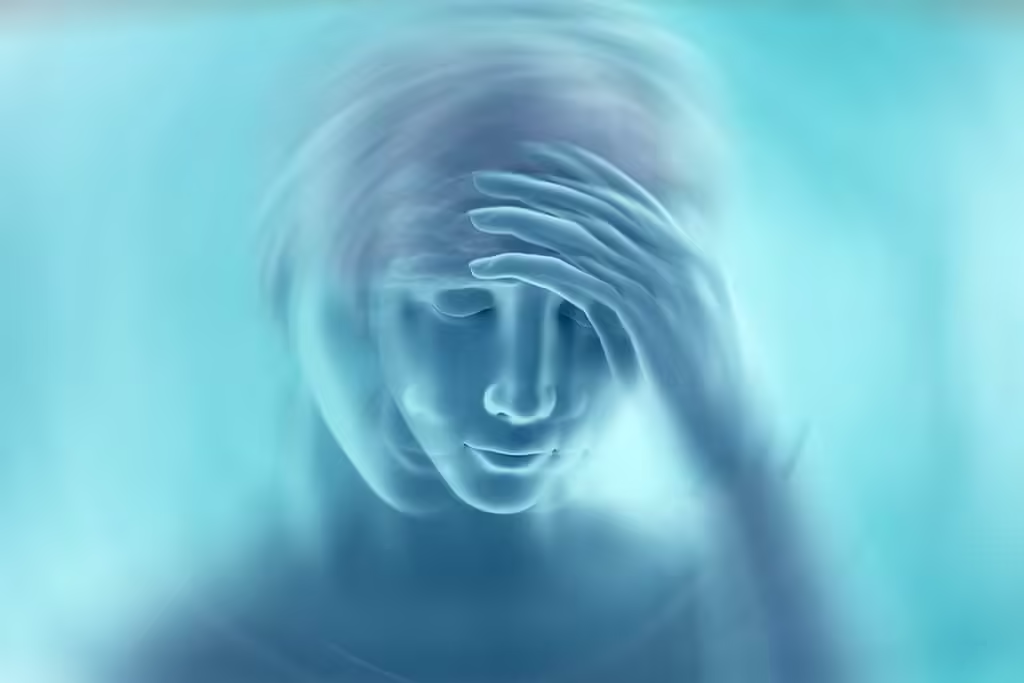Definition of Vestibular Dysfunction
Vestibular dysfunction is a disorder in the body’s balance system caused by damage to the inner ear’s vestibular system, the central nervous system processing centers, or both. Since the symptoms of peripheral and central vestibular dysfunction may overlap, a doctor will need to perform a clinical examination and diagnostic tests to make an accurate diagnosis. Consequently, these assessments are crucial for distinguishing between the two types of dysfunction.
Causes
The vestibular system is the balance system and comprises five different end organs. Consequently, any disorder in these organs can result in symptoms of vestibular dysfunction. Vestibular dysfunction is classified into two types based on the location of the lesion:
- Peripheral Vestibular Dysfunction: This type arises from abnormalities in the semicircular canals, otolith organs, or the vestibular nerve. It accounts for approximately 80% of dizziness cases. Common causes include benign paroxysmal positional vertigo, vestibular neuritis, and Meniere’s disease.
- Central Vestibular Dysfunction: This type is usually due to abnormalities in the vestibular nuclei, cerebellum, brainstem, or cortical areas. It constitutes about 20% of dizziness cases. Common causes include vestibular migraine and vertebrobasilar insufficiency.
Symptoms of Vestibular Dysfunction
Dizziness is the primary symptom of vestibular dysfunction, but it is neither a sensitive nor specific indicator of this condition. Patients often experience an illusion of movement, either of themselves or their surroundings. Familiar sensations often include spinning or feeling pulled to one side, usually accompanied by symptoms such as imbalance and gait disturbances.

Nausea and vomiting are common in acute vertigo and more severe in patients with peripheral vestibular dysfunction, though they can occur in both types.
Posture and Gait: Stability in posture and gait is affected in patients with dizziness. Central vestibular dysfunction leads to more severe postural and gait disturbances than peripheral dysfunction due to the involvement of pathways controlling balance and posture. Patients with peripheral vertigo can walk but with significant limitations.
Other symptoms of vestibular dysfunction:
- Tilting illusion: The patient feels that their surroundings are tilted due to damage to the utricle, saccule, or central connecting pathways.
- Sudden Falls: The patient may experience a sensation of being pushed or pulled to the ground, accompanied by a sudden loss of muscle tone due to vestibulospinal reflexes.
- Spatial Disorientation: Following recovery from an acute vertigo episode, the patient may experience brief spatial disorientation, with the head turning towards the affected side.
- Oscillopsia: This visual disturbance causes the surroundings to appear to move or shake, and results in blurred vision with head movement, typically due to damage to the vestibulo-ocular reflex.
- Imbalance without dizziness: Acute bilateral vestibular damage may not cause vertigo due to the lack of apparent vestibular asymmetry. Imbalance is most pronounced in darkness.
Diagnosis
You can often diagnose vestibular dysfunction clinically; however, additional tests are necessary to rule out systemic diseases and other causes of dizziness.
Several clinical tests and examination maneuvers include the Romberg, head-shaking, nystagmus, skew deviation, Dix-Hallpike, and caloric tests.
Commonly recommended diagnostic tests include:
- Blood tests: Inflammatory responses are usually negative, helping to exclude conditions like tumors or tuberculosis.
- Brain MRI: This imaging technique assesses the integrity of brain structures, blood vessels, and the cerebellum.

Treatment
Treating vestibular dysfunction requires precise diagnosis of the location and cause of the disorder.
Addressing the underlying cause can reduce symptoms and improve certain conditions, such as vestibular neuritis, vestibular migraine, benign paroxysmal positional vertigo (BPPV), Meniere’s disease, and vertebrobasilar insufficiency.
Symptomatic treatment often involves using vestibular suppressants to alleviate acute episodes of vertigo lasting at least a few hours or days. The three main classes of medications commonly used are:
- Antihistamines: Meclizine, dimenhydrinate, diphenhydramine.
- Benzodiazepines: Diazepam, lorazepam, clonazepam.
- Antiemetics: Prochlorperazine, promethazine, metoclopramide, and domperidone.
Physical therapy methods for vestibular rehabilitation should begin early to prevent the risks of falls, psychological distress, and mental deterioration in patients with vestibular dysfunction.
Prevention
Preventing vestibular dysfunction has not been highly effective due to unclear damage mechanisms. Current preventive measures focus on avoiding symptom aggravation and improving lifestyle habits.
- Lifestyle changes, including using antioxidants in vitamins A, C, and E, ensuring good sleep quality, quitting smoking, moderate alcohol consumption, and avoiding noise exposure, are beneficial for health.
- Regular exercise helps improve circulation to essential organs.
- Avoid poor posture and sudden position changes, and take precautions to prevent falls.

